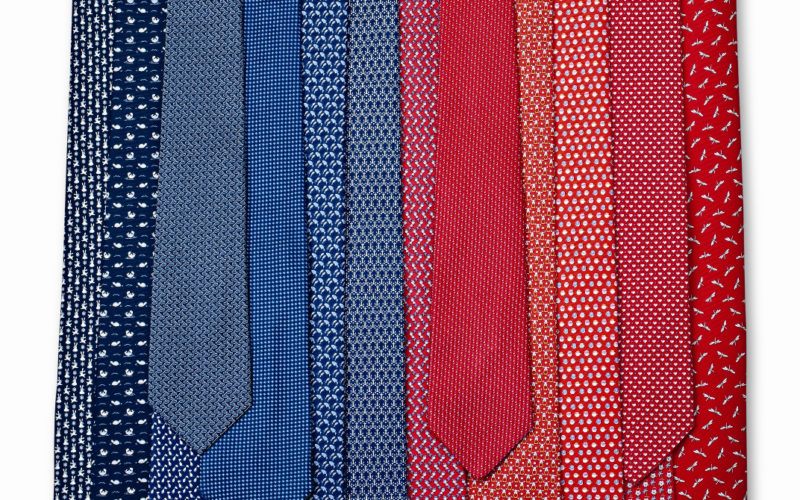Q. I have a collection of old and new ties that are not all in good condition. Can they be cleaned or updated, and how do I know if the price is worth it? I saw a tie in a store today that looked similar to one of my favorites and it cost $135!
A. This is a common issue, and in many cases it is not a big problem. As you noticed, the price of ties today is substantial, so fixing your favorites can make a lot of sense. That said, cleaning a tie is not a simple process as with other clothing.
The truth is that while most neighborhood dry cleaners can remove stains and clean your tie, they are usually not the best choice. When they press the tie, ridges from the lining may show through. The answer is to send your ties to a tie-cleaning specialist, not to your regular dry cleaner.
And as to repairs, worn tips and narrowing are easy to handle. Check along the sides of the tie and at the knot area. If the whole tie shows signs of wear, it may not be worth repairing. Of course, for a true favorite, it’s usually possible and worth doing. Since the style these days is for somewhat slimmer ties than those from awhile back, you don’t need to be concerned that worn edges will show as they would if you were making your ties wider. Some of these will-it-work? or won’t-it? questions are best left to the pros to decide. They can tell you if their efforts will be successful.
Loose seams are common. One stitch – the slip stitch – is what holds a tie together. As you are tying the tie and giving it a nice tight knot, or when you are unknotting it and taking it off, the same thread gets pulled. Stitching seams is done as part of the professional tie-cleaning process.
Tiecrafters, of New York, has been softly rolling edges of fine ties for decades. The company has been in business since 1952; it is still the best one I know of. Contact them at 1232 Second Ave., New York, NY 10065, (212) 629-5800, Tiecrafters.com. They clean a tie for $22.00. Their range of tie alterations includes: narrowing, re-tipping, relining, shortening, and lengthening (adding a piece of colored silk to the part that goes under the collar; tall guys love this feature because they don’t have to choose from the often limited selection in tall men’s shops).
As an aside, here are some clues about how to care for your fine neckties. Always untie a tie, because sliding the knot to remove it invariably injures the fabric. It might also help to wash your hands before untying. Everyday living – even reading a newspaper – leaves deposits on your fingers that will soil your favorite ties.
Of course, hang your ties on a rack – the thicker the dowel on which they hang, the less chance of creasing. Knit ties are exceptions; they should be rolled loosely and kept in a drawer.
If your tie is basically clean and only has a small spot, there is another solution. It is a cleaning product that comes in an aerosol can, called K2r spot lifter. When a speck of gravy or salad dressing drops on your tie (or suit), don’t use club soda or any of those other alleged remedies. They only make matters worse. Let the spot dry. Later, spray on the K2r. Follow the directions on the can; the product really does work.
And finally, even the best ties don’t look good if they are not well tied. Be sure yours extends down to your belt, not above it or below it . . . and that it has a “dimple” nicely centered under the knot.
Please send your men’s dress and grooming questions and comments to MALE CALL: Lois.Fenton@prodigy.net









